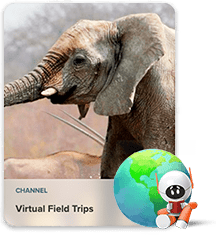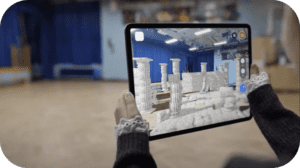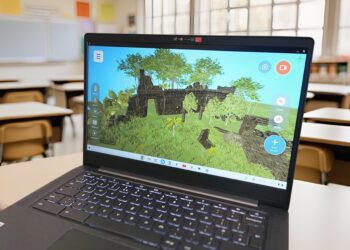Ahhh! School breaks. They offer much-needed downtime for students and educators as you enjoy the festivities and reconnect with family and friends. It's a time for leisurely pursuits with no pressure. Stay in your jammies all day? Absolutely! While students take full advantage of it, it's not uncommon for teachers to have one hand on your cup of coffee and the other hand preparing for a return to the classroom. So, as you contemplate your next move, here are a few ideas, complete with pre-built learning resources and instructional strategies, to help students transition back to the classroom and re-engage in the learning process.
Start with Some Free Time
Students are full of energy when they return from vacation. Meet them where they are and give them 15 or 20 minutes to relax and reconnect with their friends. This recess will allow you time to circulate and chat with everyone as you welcome them back to class. Your recognition is essential for anxious students who need to feel a sense of belonging and acceptance. When ready, get them up and moving with a game tied to an upcoming lesson.
Idea 1: Scavenger Hunts to Break the Ice
Scavenger hunts get students active and thinking in a fun environment, and they’re easily customized for any age group and subject matter. Hunts can be as simple as finding objects and following clues to requiring students to solve problems with each hint. Check out these ready-to-use choice boards for a few ideas to help you get started. Or, take advantage of the Spotlight on Strategies: Vocabulary Scavenger Hunt, a favorite among DE educators!
Idea 2: Mini-Exhibit to Collaborate & Learn
A great way to get students up and collaborating with their peers is to stage a mini-exhibit. Give students voice and choice as they work together in teams to demonstrate something they learned.
- Break students up into groups of four.
- Give each group a theme related to upcoming learning to research.
- Give them time to create a learning exhibit using a chosen medium—written, art, podcast, storytelling, etc.
- On the day of the exhibit, have each group set up a learning station somewhere in the room.
- Allow one group at a time to visit each station and jot down what they learned. Questions about the material are encouraged.
- When back in their groups, have them choose one person from each group to summarize what they learned verbally.
This exciting introduction to new material will spark curiosity about upcoming learning. And for a bonus, students can put their final exhibit into DE’s Studio for others to explore. Then use the Spotlight on Strategies: IDEA Share for feedback on projects.
Explore more engaging learning resources and helpful instructional strategies in Discovery Education Experience.
Idea 3: Easy Active Strategy: See-Think-Wonder
For those of you with special time constraints, try this Spotlight on Strategies: See-Think-Wonder to spark students’ thinking and satisfy their need for peer collaboration. Choose an image related to an upcoming topic and supply pencils and paper.
Separate students into small groups and ask them to brainstorm about the image using these three questions:
- What do you see?
- What do you think about that?
- What does it make you wonder?
When time is up, have one group member share their findings. Use this information to stimulate a discussion leading to an upcoming lesson.
Idea 4: Virtual Field Trips

Interactive Virtual Field Trips ease students back into learning with super-fun experiences, from visiting LEGO® Brick in Denmark to going backstage at the Country Music Awards to exploring STEM with Olympian Katie Ledecky. These virtual field trips are available on most any subject matter, curated for different age groups, grades, and difficulty levels.
When the trip is complete, break students into small groups and ask them to summarize the field trip and include a list of questions for future discussions. You can also take advantage of ready-to-use activities that support DE’s most popular virtual field trips.
Idea 5: The Gold Standard for Engagement: Augmented Reality
Nothing says “attention” like transporting students into a new reality. It’s more than a cognitive experience. Stimulate your students at an emotional level and spark their imagination. Content presented in this way is more meaningful and memorable, and research shows students retain information at a much higher level when exposed to immersive activities.
Virtual reality may be out of reach due to the cost of the equipment, but augmented reality (AR) is cost-effective and easy to use. All you need is a smartphone or tablet, and you’ll be ready to download an AR app. Scavenger hunts work great with this technology!
Augmented reality sandboxes are especially fun for breaking the ice. With an app like Sandbox AR (available on iPads only), students can create virtual spaces and populate them with unique objects taken from science, nature, history, and the “built” worlds.
Create a maker space and ask students to take turns building a city one object at a time. It will stimulate their imaginations and bring them back to the world of learning!
Find out more about Discovery Education’s collection of augmented reality apps and other immersive experiences on our Immersive Learning hub.
As you return to the classroom, we hope these learning resources and strategies help you feel confident you can spark students’ curiosity and re-engage them in the learning process. Create fun and inviting activities aligned to the upcoming curriculum and ease the transition from vacation-mode to learning-mode!
About the Author
Rose Lattanze is an educational consultant and writer helping educators blend technology with instructional growth. She trained in Dr. Robert Marzano’s research-based instructional strategies, serving schools and districts as they transformed from teacher-based to student-based instruction. Currently, she writes about all things education for various EdTech companies.








